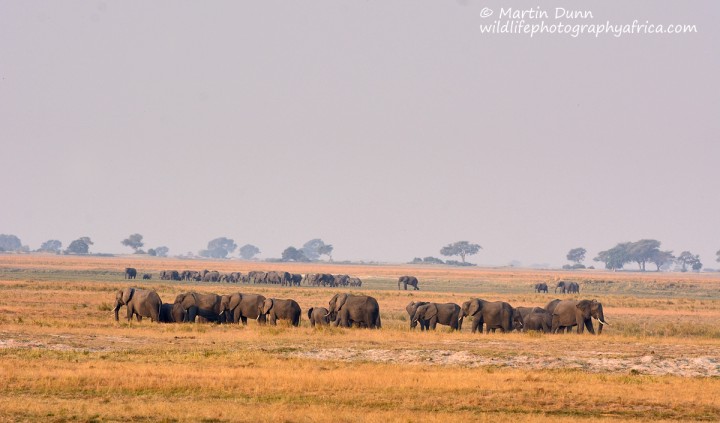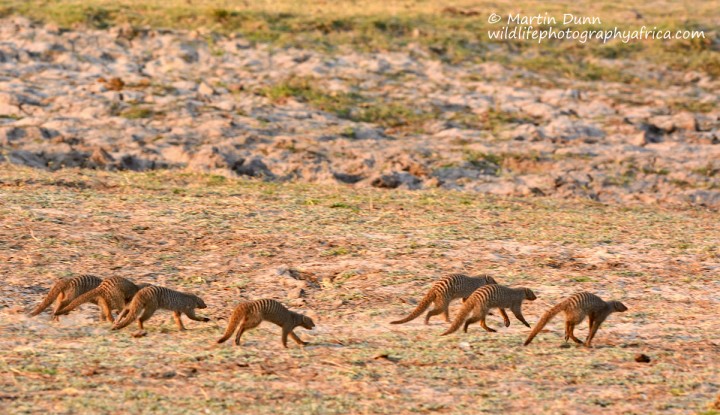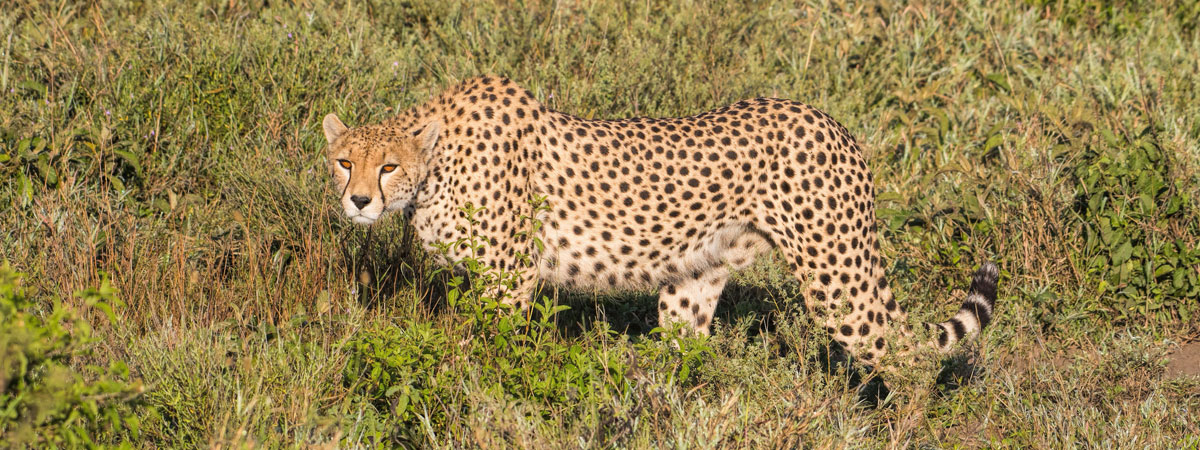Following on from our great afternoon in Chobe yesterday (On safari in Chobe NP, Botswana) I had high expectations for our second day.
17 September 2014
The night turned out to be pretty quiet. I heard lions in the distance and some hyaena noises, but nothing that sounded close to camp. Shame really as I love it when animals come through camp in the night and it is great to hear people’s reactions after their first night in the bush.
We woke just after 5 and gathered around a flickering hurricane lamp for cups of tea and coffee.
It was no longer dark when we left camp, but still half an hour away from sunrise.
The late appearance of the sun was largely due to the amount of dust and smoke in the air which meant that the sun didn’t appear until it had risen above the haze. In the evenings we’d noticed that it didn’t sink slowly below the horizon accompanied by a pretty sunset, it just kind of disappeared into the murk. Instead of the usual rich evening light which lends itself so well to photography the light just became dull.
On the plus side the hazy light did reduce the contrast and meant that there were less severe shadows to contend with.
Ahead of us we could see clouds of dust rising up from the trees. This, combined with the smell, told us that there was a large herd of buffalo nearby. Almost certainly the ones we had seen around dusk yesterday.
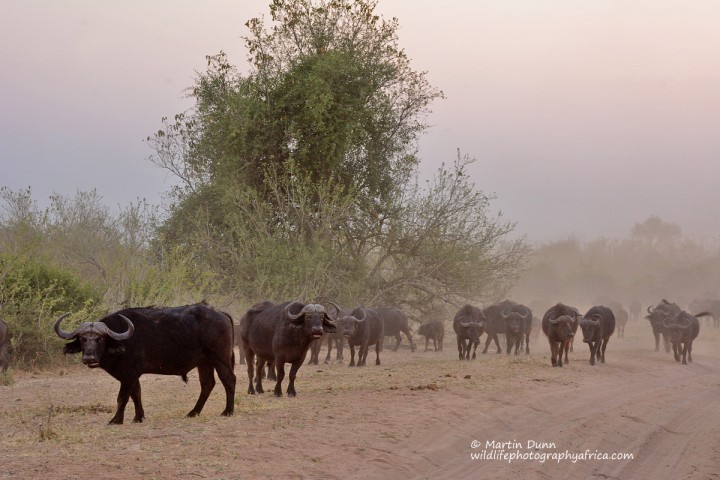
We soon found them all around us and it didn’t take long to make a rough calculation that our guess at a herd of around 600 head was a long way short. There had to be at least 1000 animals in this herd.
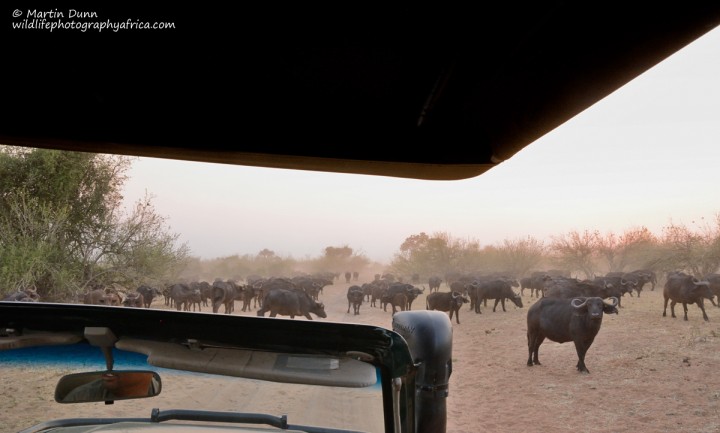
We eventually made our way through the buffalo. Dennis kept assuring us that with this many buffalo there were bound to be lions nearby and – sure enough – we saw a couple of lions sleeping under bushes some distance from the road.
Like the leopard sighting the previous afternoon, although we could see them they didn’t present much of an opportunity for photographs.
Great sightings but limited photo opportunities
Our safari in Chobe was a bit like that on many occasions. We had some terrific sightings that didn’t lend themselves to photography.
I always find this extremely frustrating. I see no point in taking photos just to prove I’ve seen a particular animal when I know that I’ll never be able to turn those photos into anything worth looking at.
Viewing so many of my sightings though a camera lens is one of the curses of carrying a camera. It’s a kind of tunnel vision that undoubtedly prevents me from seeing the full landscape, because I am so focussed on a particular part of it.
A friend who travels with me regularly never brings camera; he just enjoys the sightings without the hassles of trying to capture a decent image. If other vehicles partially block his view he can live with it whereas it really irritates me.
If we’re looking for game he’ll almost always spot something first, simply because he is looking for game whilst I’m looking for a photographic opportunity. You’d think after all these years I’d have learned.
From that perspective although this safari provided a lot of frustrating moments but there were also several occasions when I knew trying to get a decent photo would be a waste of time so I just sat back and enjoyed the spectacle. It was actually much more relaxing.
I have to admit as well that although I was frustrated, my travelling companions were really excited just to see the animals.
Our morning drive provided a wide variety of sightings.
Although I’m not a fan of baboons, even I will admit that they can occasionally look cute.
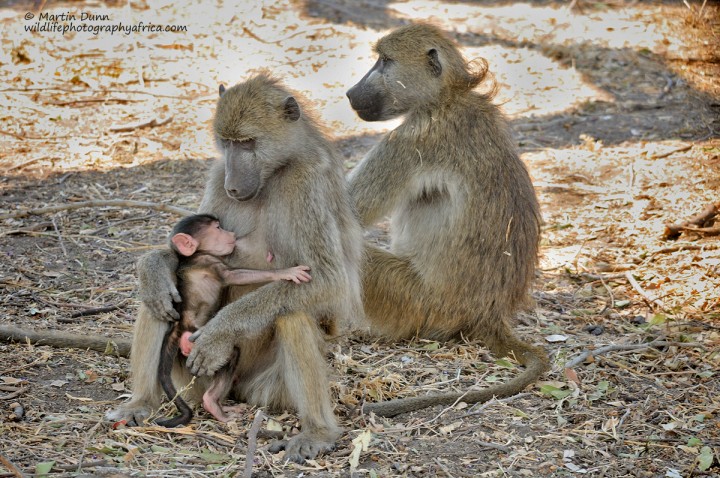
But a baby zebra is undoubtedly cuter
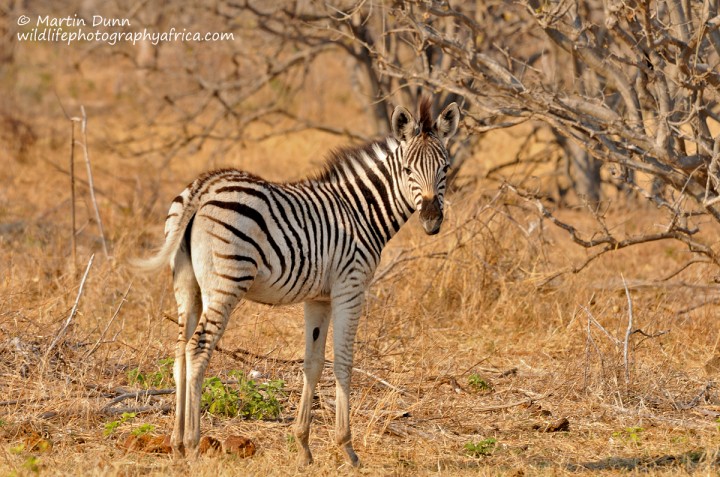
Awesome Bird Life
As well as the ubiquitous elephants and buffalo we saw a terrific variety of bird life: Fish Eagles,
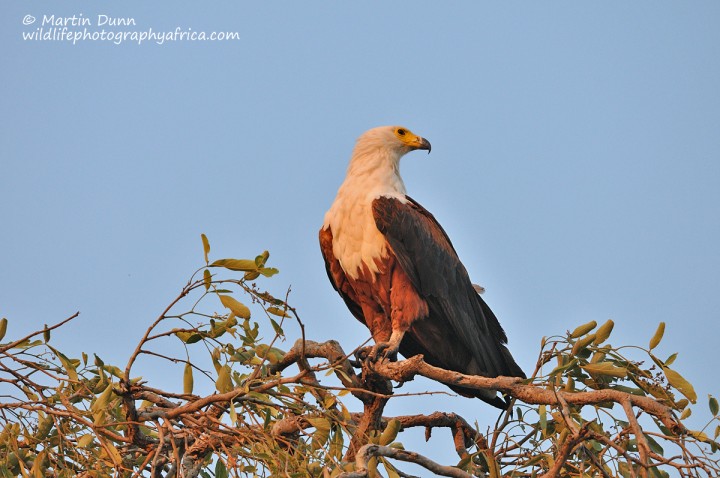
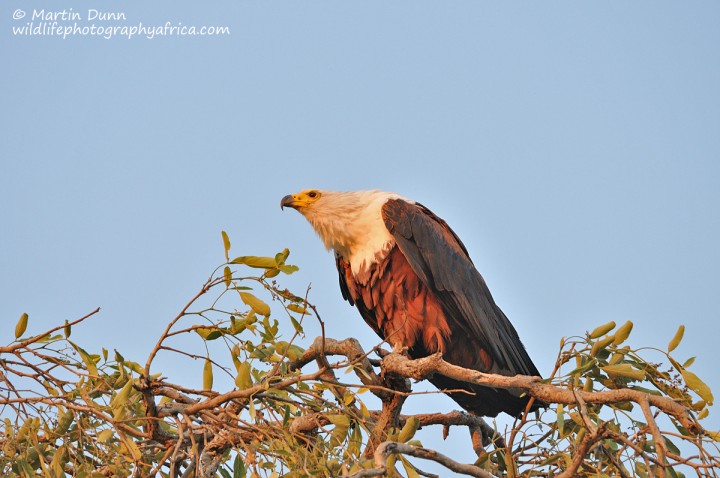
Carmine Bee Eaters,
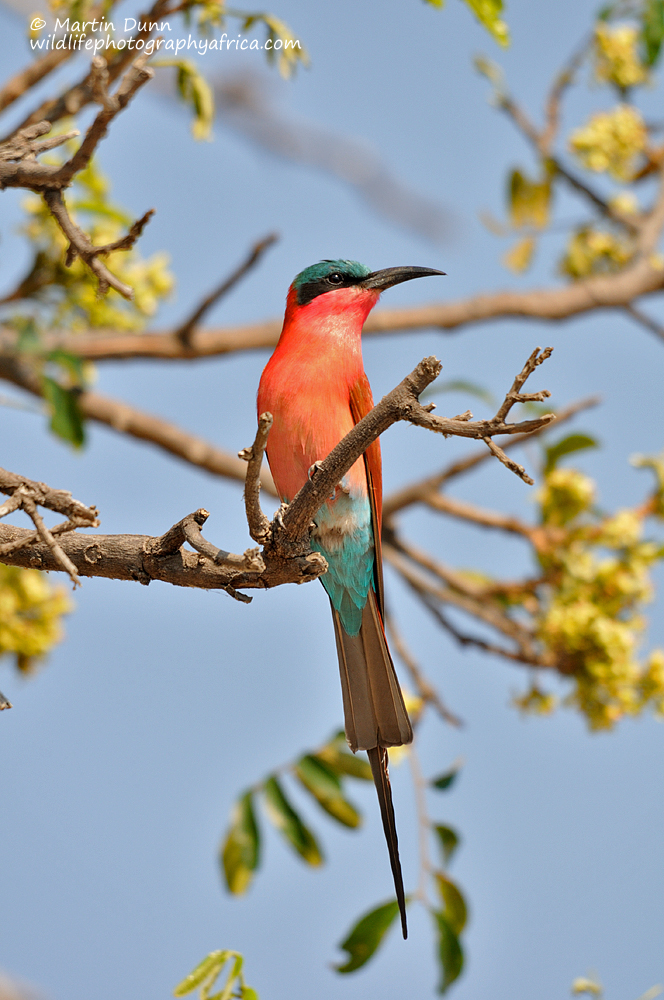
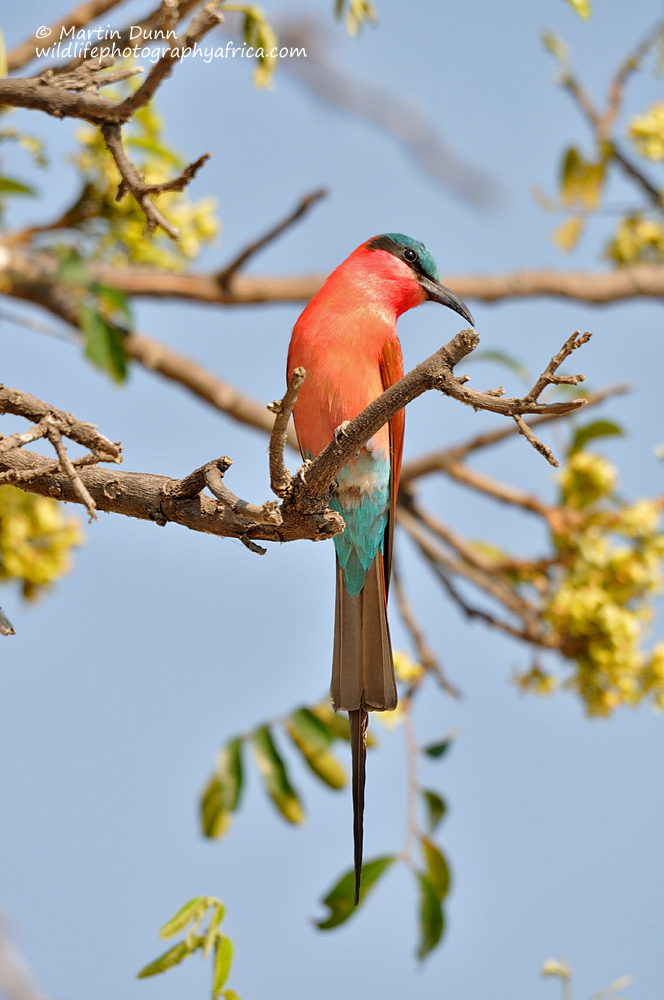
Blue Waxbills,
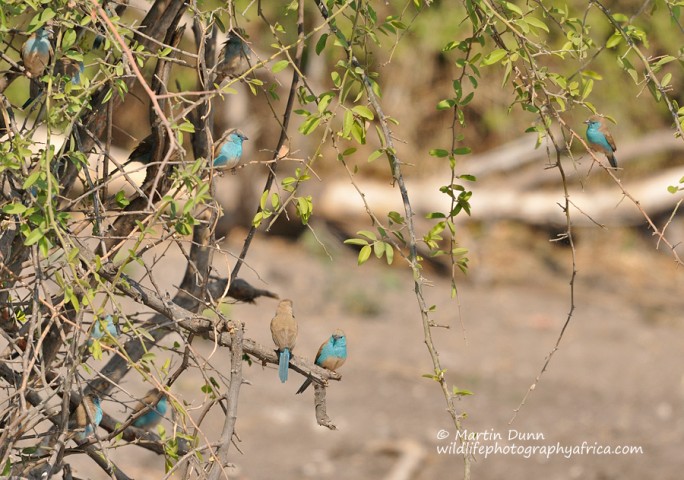
Open billed Storks
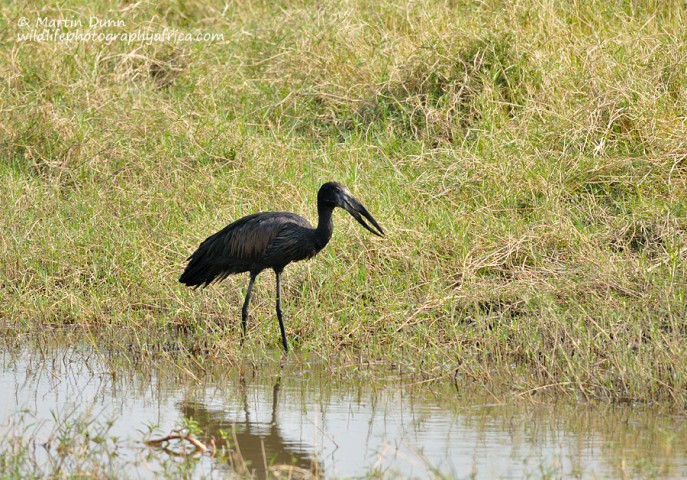
Tawny Eagles
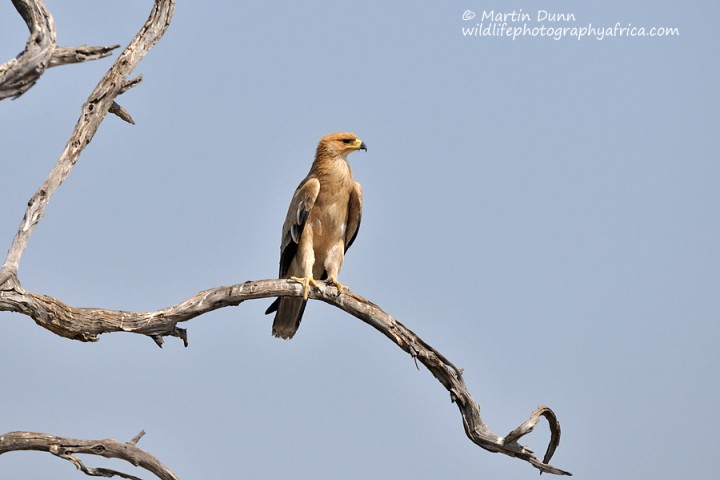
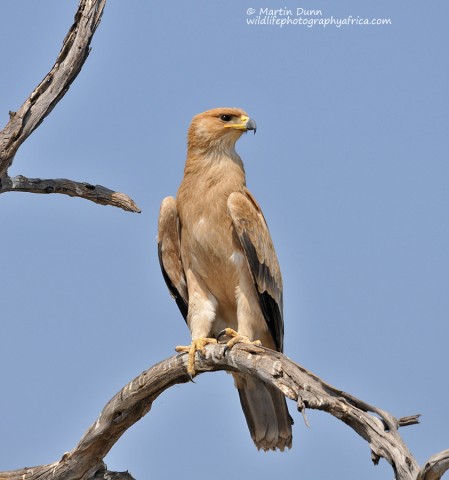
In fact I’ve never seen so many Fish Eagles. On one occasion we’d just settled in to watch a pair of them in a tree overhead when a flurry of wings signalled the start of a mating session. Something I’d never witnessed before with Fish Eagles.


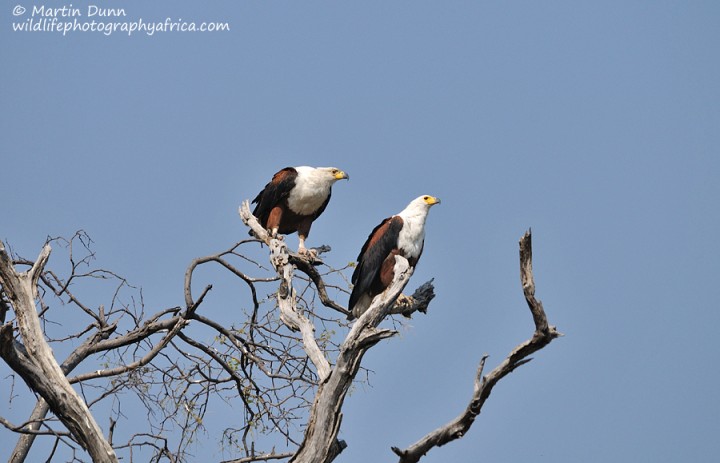
With so much of the animal activity in Chobe centred along the river it was inevitable that we would be seeing other game vehicles and when there was a significant sighting the cars appeared from all directions. Despite that, there was only one when it felt a little crowded and overall I was impressed with the way that all the licenced guides/vehicles stuck to the roads and followed the rules; resisting the temptation to drive off road to get closer to the animals.
Unfortunately the same could not be said for a number of self-drivers from South Africa. Where we would sit on the track and wait for lions to move out from their cover, these guys had no hesitation driving off road and nosing their vehicles into the bushes in an effort to make the lions move.
Time for Brunch
Back in camp, brunch was a real feast.
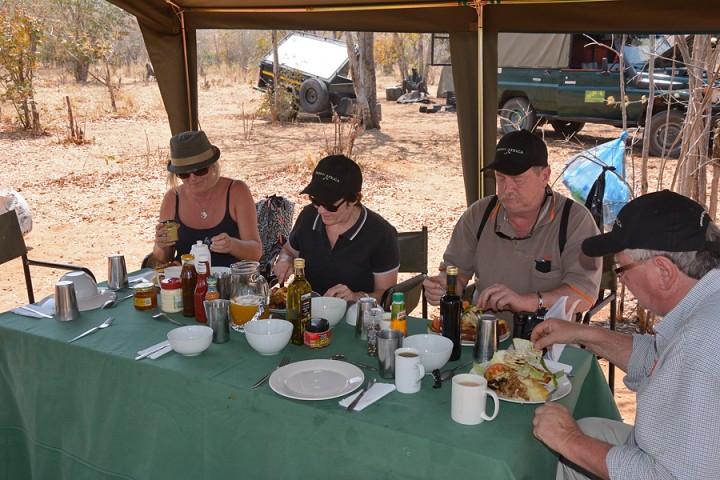
A couple of hours in the shade gave everyone time to catch up on their diaries.
I took the chance to take a few pictures of our little camp. We had a private mobile camp, organised for us by Safari & Guide Services in Kasane and were camped at Bogo site No.3.
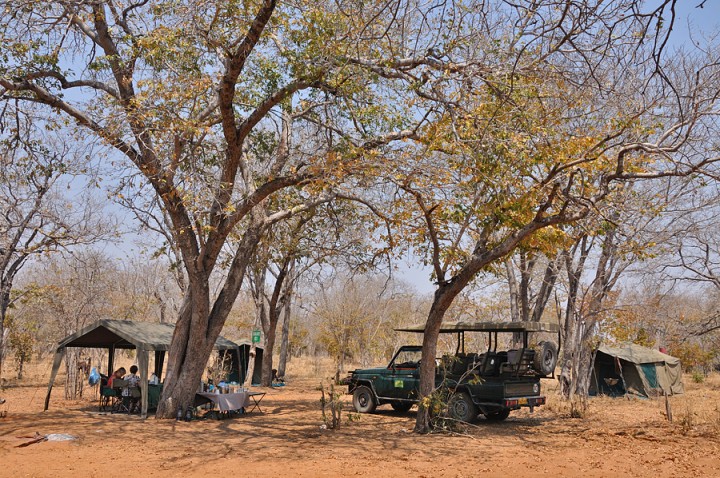
The tents were not luxurious but did have comfortable beds and private ablution facilities.
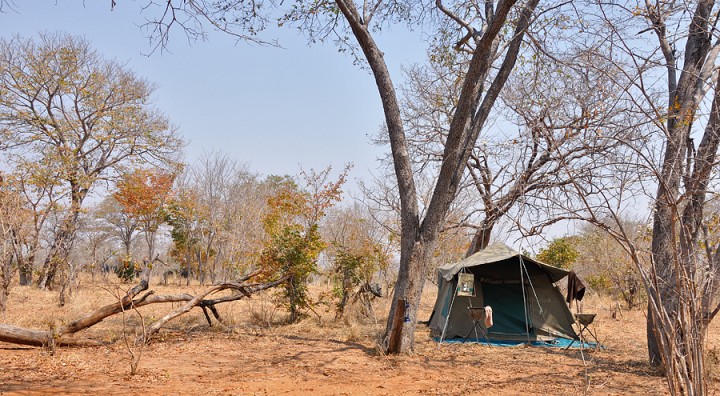
The only additional thing we would have appreciated was perhaps a larger shaded area to lounge around in. As it was we had to sit around the dining table or use our own tents – which were a bit hot and airless during the day.
Small quibbles though – overall the service was excellent; attentive but not obtrusive.
While we ate lunch the elephants were constantly moving through the trees behind us, making they way towards the river for their evening bath and drink.
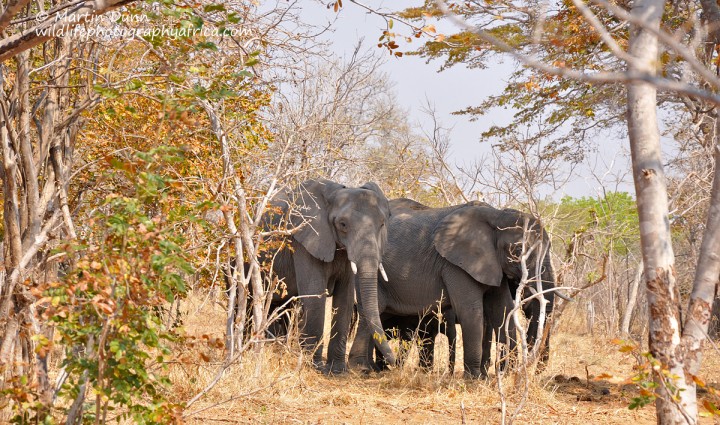
On one occasion a loud trumpeting caused us to look up and there was a large male giraffe standing just behind the tents, watching us. By the time I’d got my camera he had disappeared. Not just moved away, but literally vanished.
How does a 4.5 metre tall animal weighing about 950kg do that?
Everyone was ready and eager to head out on our afternoon game drive at least fifteen minutes before the time we’d agreed, so off we went.
As we left camp, there seemed to be elephants whichever way we looked, walking unhurriedly through the trees to the river.
Once we got close enough to see the river there were animals spread out as far as the eye could see; from left to right.
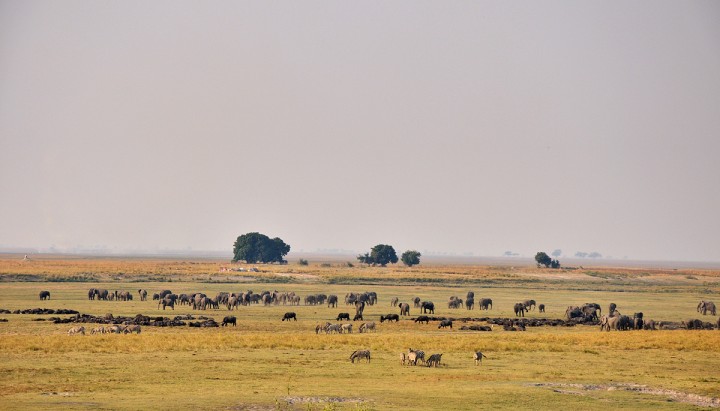
A profusion of scrubby little trees and the general haze prevented the view from being perfect but it was still quite a spectacle.
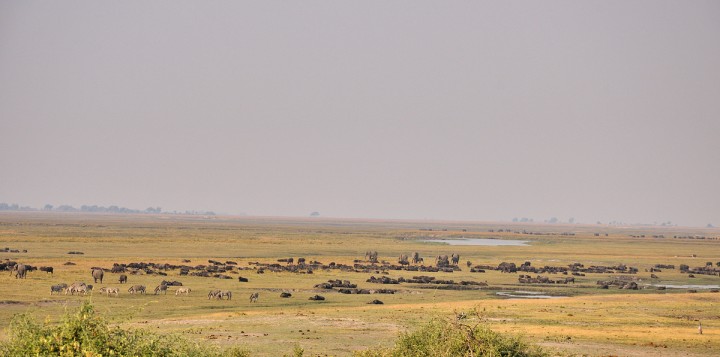
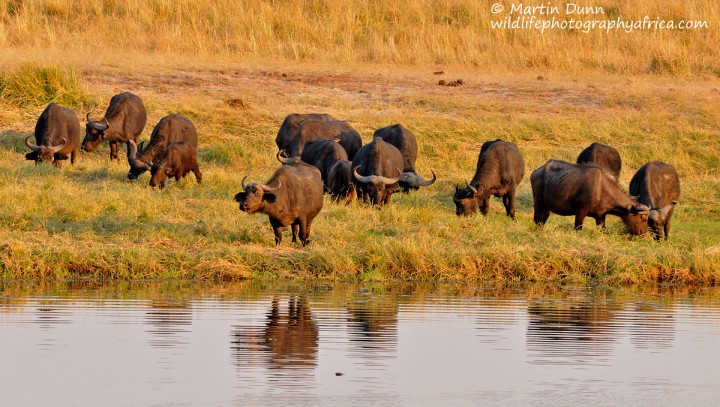
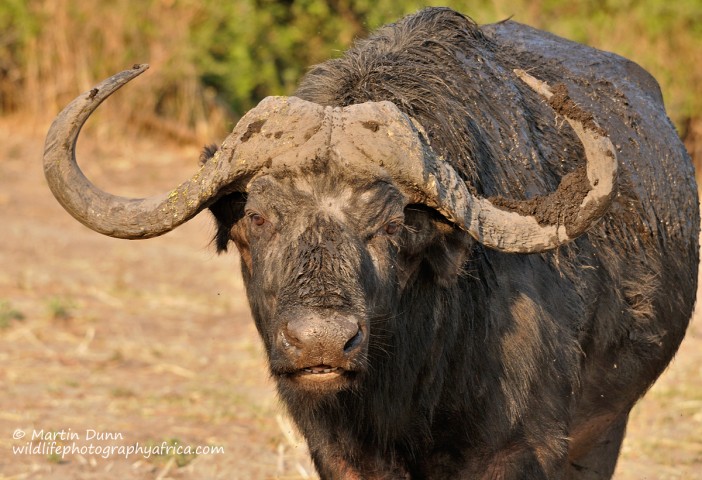
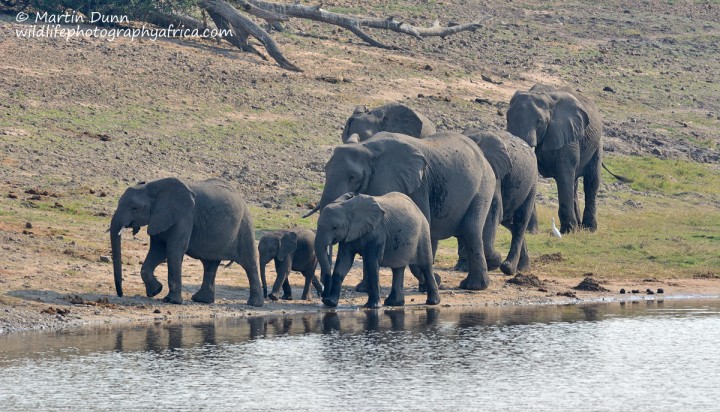
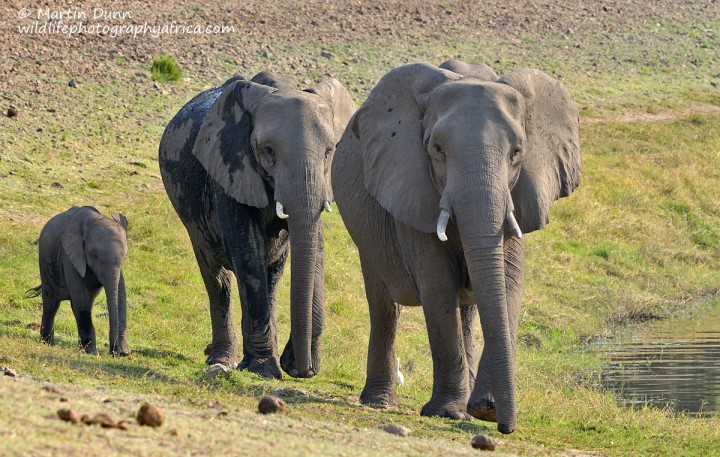
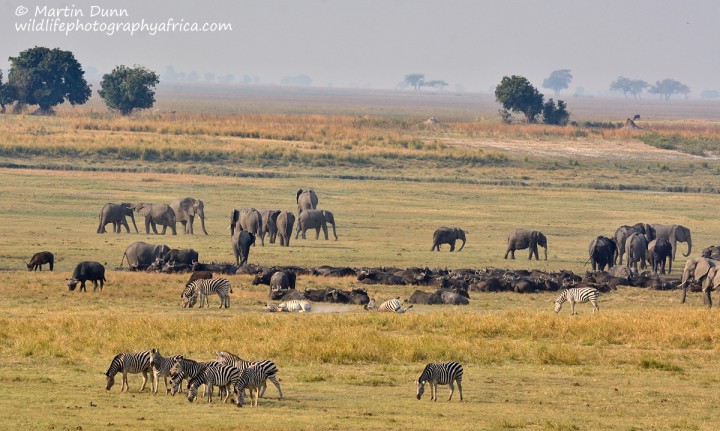
After an hour or so of driving around without seeing anything new we decided to head eastwards towards where we’d seen the lions earlier in the day. It was about time that they started moving.
A sad moment
We hadn’t gone too far when we saw an elephant lying on its side.
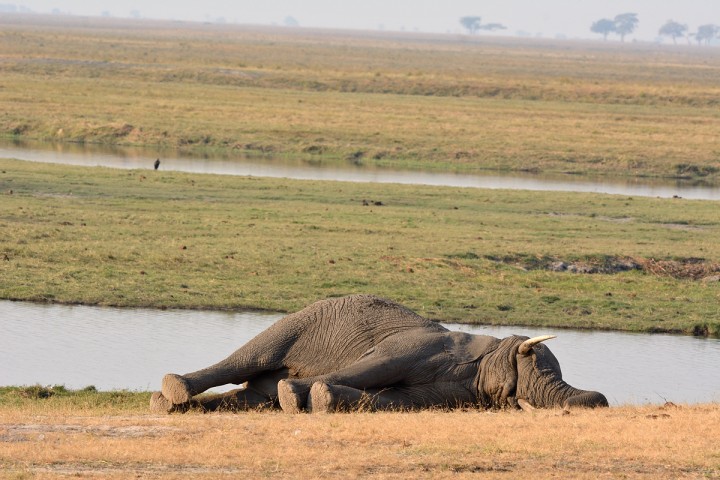
Dennis assured us that it was just resting but we were certain that it was dead. After studying it carefully for a few minutes he had to agree with us that it was indeed dead. It must have happened very recently too. We hadn’t seen it when we’d passed the same spot earlier in the day and the hide had not been breached by any scavengers and there were no vultures anywhere nearby.
Sad.
Back with the lions
Right where we had seen the lions earlier, we could see that a vehicle was stopped. When we got closer we saw that it was indeed the same lionesses and cubs. They were still resting in the shade.
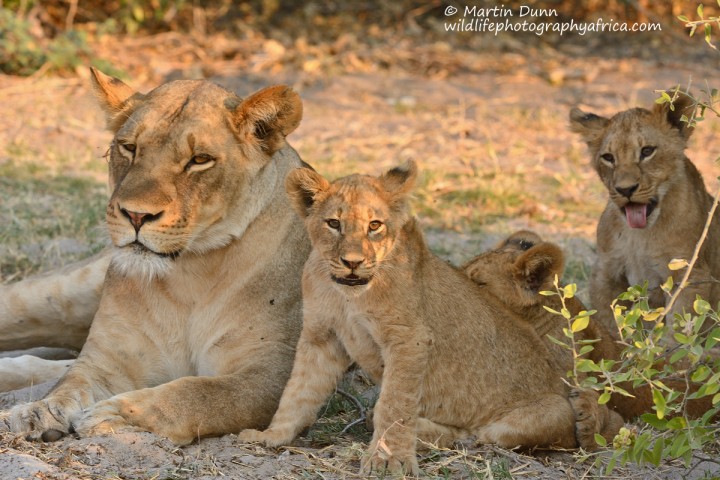
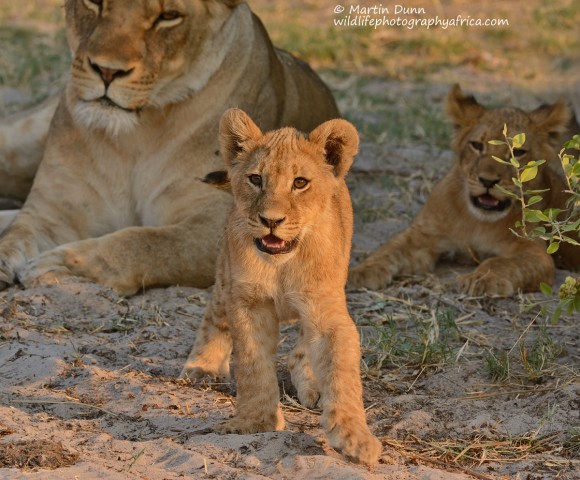
We drove on for a few hundred metres in search of the male lion we know would be nearby. We just caught sight of him slinking off into the bushes.
It was a unanimous decision that we would not get out of the car for our sundowners so we mixed up the gin and tonics then turned around to return to the lionesses and cubs.
One of the cubs was already up and about.
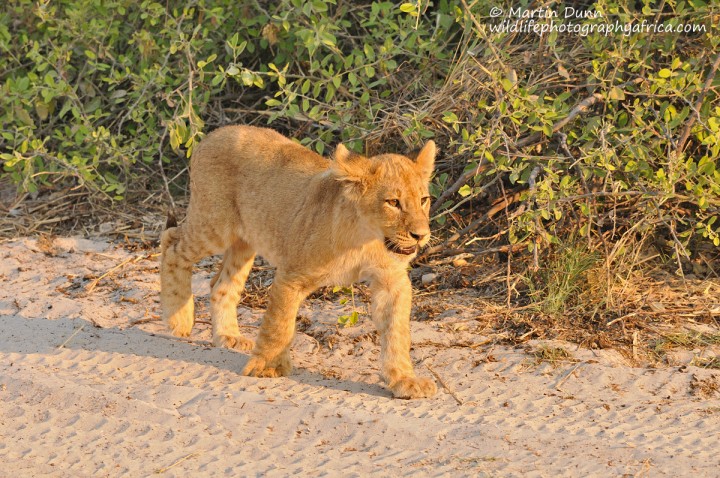
One of the lionesses stood up and stared intently at something behind us.
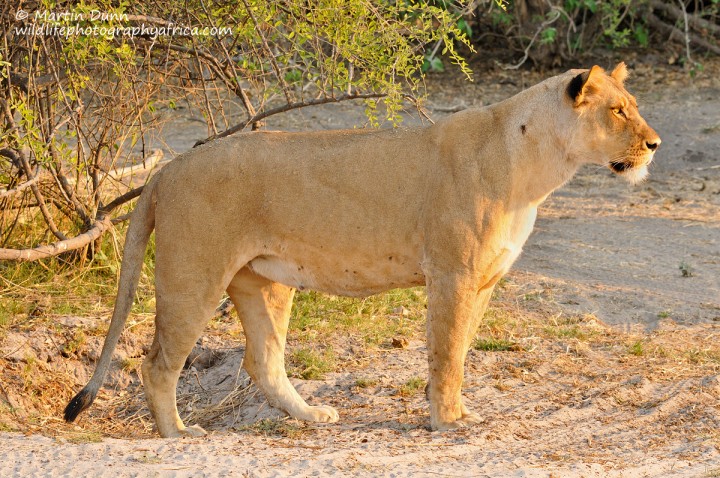
We guessed it was the 2 zebras we’d just passed. We thought that they would be too far away to be the target of a hunt but she was clearly interested and began moving purposefully towards them. She walked along the road, intending to pass them and then get behind them.
A few moments later the second lioness got up and also started moving stealthily forward.
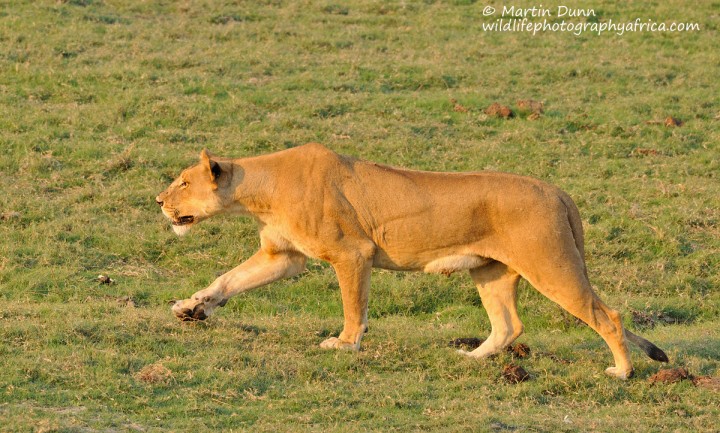
Using a low ridge to keep herself hidden from the zebras, she crept forward into a position where she would be able to intercept the zebras when the lead lioness chased them.
Anxious not to disturb the hunt we switched off the engine and watched, hoping our position would enable us to see whatever transpired.
Once again it was incredible to see how these big cats worked together. Without any apparent signs of communication they all knew exactly where they needed to be.
After a few moments with the cubs, as if she was telling them to stay put, the rearmost lioness also joined the hunt.
The second one was level with us now. Each time the zebras stopped grazing to look around she froze, mid stride. As soon as they dropped their heads again she crept forward.
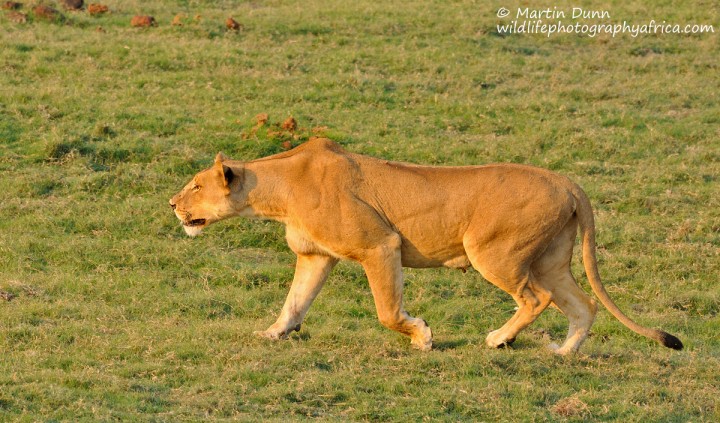
We guessed that the moment must be getting close as the second lioness was now on her belly, literally crawling forward.
Of course it was too much to expect that the hunt would go perfectly. The cubs either got bored or decided that Mum needed their help and began trotting forward.
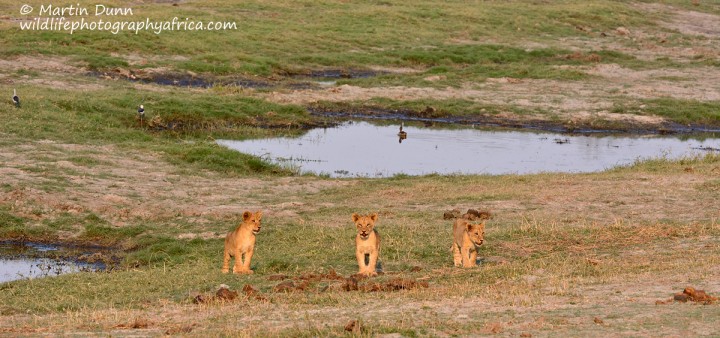
They reached the rearmost lioness and started to try and play.
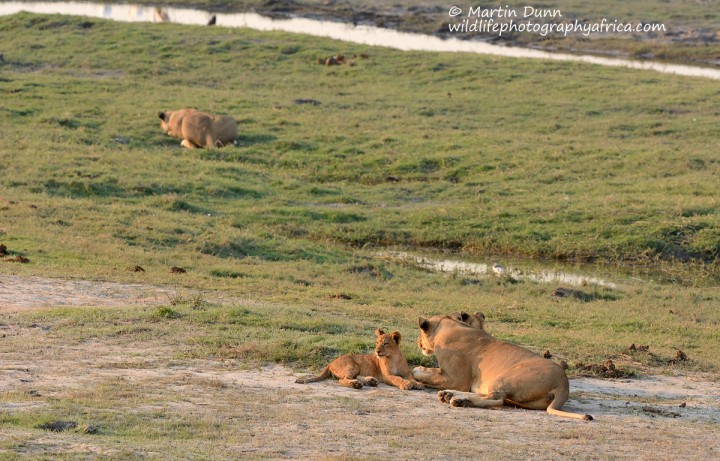
Suddenly the zebras whinnied and bolted. Seconds later we saw the lead lioness in pursuit. Either by luck or good judgement the zebras didn’t run towards the hidden hunters, they ran through a shallow stream and kept going. The lead lioness charged into the stream after them but whereas the zebras has just run straight through the water, it slowed her down and she gave up the chase a few moments later.
We saw her flop down on the ground, wet and muddy from her hunt. The other two lionesses had not even stood up to join the chase.
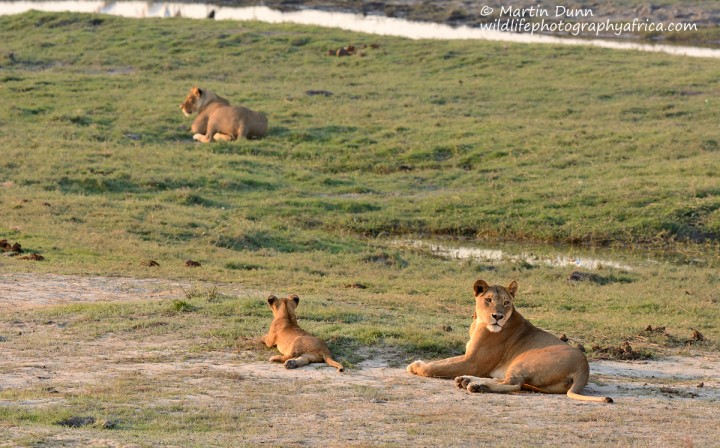
With the zebras already running and moving away from them they would have stood no chance.
Then something happened that I’ve never seen before. The lead lioness began rolling around in the mud until she was practically black all over before flopping down to rest.
We sat and watched the lioness with the cubs for a while and then, as the light was fading we decided to leave them alone.
We hadn’t seen a kill, but the whole group was excited that they’d had a chance to witness the hunt and see for themselves the incredible coordination of the lionesses.
